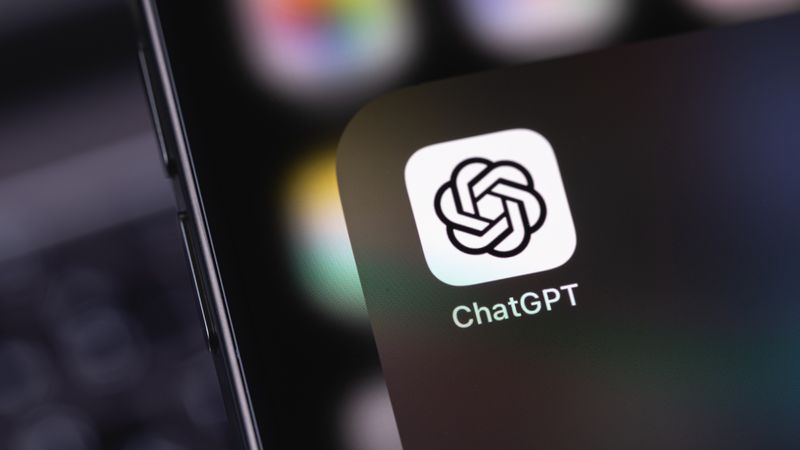
The way we interact with ChatGPT is evolving. With new features like advanced memory and projects, your conversations with ChatGPT can now build up over time. This means that deciding whether to start fresh and hit that ‘new chat’ button or continue a previous conversation matters more than ever.
It’s not just about keeping your chat history tidy (although I share that urge). It’s about getting you more helpful answers. Starting a new chat often leads to clearer, context-free responses, while continuing a chat saves time and builds on your previous work. Knowing when to choose which option can improve how useful ChatGPT is to you.
Understanding ChatGPT’s memory
The way ChatGPT remembers things has recently changed – and it’ll probably keep evolving quickly. With that in mind, here’s the current state of play.
If you’re a paid user, ChatGPT can now remember certain details across your chats thanks to its latest memory upgrade. This feature allows ChatGPT to recall information you’ve explicitly allowed it to remember, like your name, writing style, or ongoing projects.
It can also now (sometimes) reference information from previous conversations, too, but it doesn’t automatically recall everything from all past chats. You can review and manage what ChatGPT remembers about you in your settings, and you can turn the memory features on or off.
In contrast, context within a single chat thread is always active and can't be turned off. Think of memory as the long-term storage that helps ChatGPT maintain consistency across multiple chats. Chat context is short-term and includes everything you’ve recently typed or received back from ChatGPT within a single chat session.
So, while memory might recall that you prefer clear, emoji-filled Instagram posts, chat context remembers the actual caption you wrote five minutes ago. This distinction matters when deciding whether to continue or start fresh.
But there’s a catch. Not to complicate things further, but since ChatGPT’s memory became more advanced, it occasionally recalls context you might not anticipate.
Simon Willison, creator of Datasette, recently highlighted this in a blog post. He showed that although ChatGPT often generates responses from scratch, it occasionally draws unexpected details from previous conversations, potentially confusing things.
There's no way to predict exactly when this happens, so applying basic guidelines for continuing or starting chats helps manage any unpredictability.
When it makes sense to continue a chat with ChatGPT
The general rule here is a straightforward one: keep going in the same chat when you’re still working on the same thing.
But sometimes it’s not always easy to know, so let’s look at a few examples.
If you’re in the middle of a project, still exploring one idea or fine-tuning a piece of work, then staying in the same chat is going to get you the best results.
ChatGPT will have access to everything you’ve said before in that specific conversation thread, like your earlier prompts, any feedback or refinements, and the tone you need. This helps it stay consistent and avoid repeating questions you’ve already answered.
Let’s say you’re working on a blog post. You’ve asked ChatGPT to help you outline it, then write the intro before you work on the rest in your own time. Later, you want help crafting a title. Staying in the same chat means it still “remembers” all the earlier content and context, so it won’t need to be caught up.
Staying in the same chat also works well for editing, troubleshooting, or continuing research. As long as the task is part of the same flow, you’ll get better results by sticking with it.
When it makes sense to start a new chat with ChatGPT
But sometimes there’s nothing better than that clean slate feeling, which is when a fresh chat is the smartest move.
If you’re switching topics, like going from writing about AI to planning a holiday, then starting a new chat avoids confusion. ChatGPT won’t try to pull in tone, structure, or any assumptions it made from your last request.
New chats are also useful when you want a different take on an idea. So if your last few prompts shaped ChatGPT’s responses too much, starting again can help reset the mood.
You’ll often get clearer, less biased results when it isn’t influenced by the last 20 messages you’ve exchanged.
Especially when things go wrong. Maybe it keeps misunderstanding what you’re asking or it’s clinging to an earlier version of a draft. Sometimes, a chat just gets messy and feels stale and unhelpful. In that case, opening a new one can be a much-needed reset.
What about projects?
If you're a paid user, you'll see a ‘new project’ option somewhere under 'new chat' in your sidebar. Projects are essentially folders combining memory, context, and files created to help you streamline complex tasks.
If you’re working on something ongoing, like a brand strategy, a course, or a big research task, then projects let you upload documents, set goals, and keep everything in one place. ChatGPT will remember what you’re doing in a project, even if you leave and come back days later.
Projects are helpful because they reduce the need to repeat yourself. You won’t have to keep uploading the same file or explaining the same task over and over. They’re a great choice for anything that involves multiple steps or lots of documents.
However, projects aren’t necessary for everything you do with ChatGPT. If you just want a quick brainstorm, some help with a caption, or a fast recipe idea, a regular chat is often quicker and easier.
No right way, just smarter ways
There’s no universal rule for when to start a new chat or continue an old one. But understanding how ChatGPT handles memory and context means you can use it more effectively.
Stick with a chat for continuity in ongoing tasks. Start fresh for clarity and a new perspective. Then utilize projects when tackling big, complex tasks.
Understanding this stuff (and understanding that it’s always changing and evolving) doesn’t just help you make the most of your ChatGPT subscription, it helps you use it more like a creative, collaborative tool that actually gets what you’re trying to get done.







